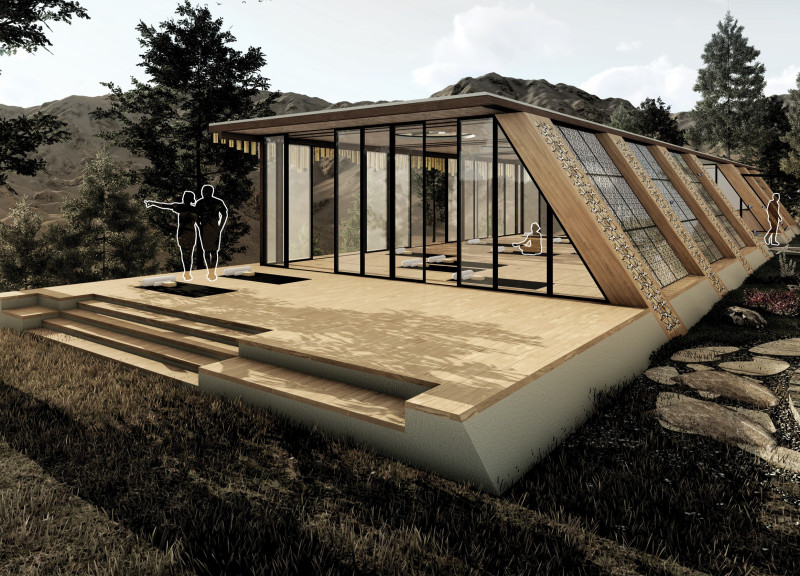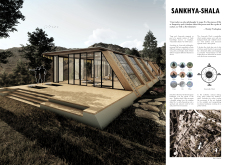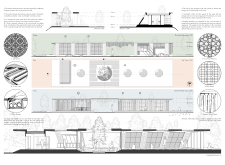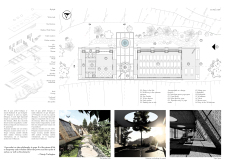5 key facts about this project
Sankhya-Shala is located in the peaceful landscape of Portugal, designed to reflect the principles of Ayurveda and the connection to nature. The space serves as a retreat for yoga and meditation, emphasizing the relationship between well-being and the natural surroundings. The design incorporates the three doshas—vata, pitta, and kapha—which each represent different aspects of health and harmony, guiding the layout and overall design.
Yoga Hall
The Yoga Hall is a central element of the design, crafted to adjust to changing light throughout the day. Each phase is aligned with a specific dosha, allowing the space to evolve with the rhythms of nature. During the Kapha Dosha, from sunrise until 10 AM, soft morning light filters through stone jali, inspired by traditional Portuguese designs. This feature adds a layer of complexity to the interior while creating a calming environment perfect for meditation.
As the day moves into the Pitta Dosha, which lasts from 10 AM to 2 PM, the design changes. The hall includes roof cutouts that let in direct sunlight, creating a lively atmosphere suitable for various activities. This design promotes natural ventilation and ensures comfort, enabling users to engage fully with their practices during this part of the day.
In the later hours, from 2 PM until sunset, the focus shifts to a large glass facade that offers views of the surrounding landscape. The light that comes through promotes a peaceful environment as the day ends. The addition of bamboo wind chimes brings a sensory element that supports the experience, linking back to the qualities of Vata, the air and ether in the design.
The layout encourages easy movement between indoor and outdoor areas, featuring open decks extending from the Yoga Hall. The southern deck welcomes bright sunlight, while the northern deck offers shaded places that incorporate existing trees. This combination enhances the experience of connecting with nature as part of the retreat.
The design intricacies culminate in a setting that supports both introspection and community. It allows visitors to participate in practices that promote physical and mental well-being, embodying the spirit of a holistic retreat.






















































